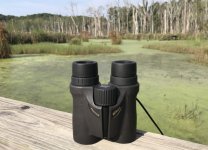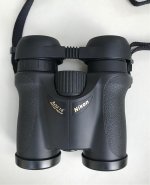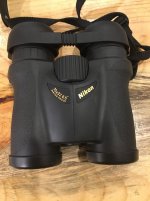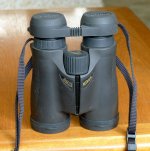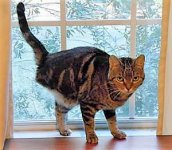Recently I bought some LNIB Nikon Premier 8X32 binoculars....like two weeks ago. I've only been out with them on a couple of trips BUT.... SWEET! Really nice! Focus adjustment-Nikon smooth. ER- great for me with/without glasses. Eyecups- adjust with a definite "click." Hinge tension- perfect. It IS a little chunky at 24.5 ounces...same weight as my Monarch HG 8X42. SV 8X32 is 21 ounces. Seems like it's built like a tank though...
I went to my current favorite birding spot that's close to me and another that's probably my #3 on two different days. I just strapped them on with me RYULH and started walking. Color/image/contrast is VERY nice. I sure didn't notice that the FOV was less than some other 8X32s I have and it's not MUCH difference at 409 ft. Edge to edge pretty dang sharp too.
So initial thoughts are very positive for this binocular. Nothing new for some that have owned this binocular for several years I'm sure. I'm looking forward to comparing to my Conquest HD 8X32.
I have to say my option of Nikon binoculars keeps getting better and better...
I went to my current favorite birding spot that's close to me and another that's probably my #3 on two different days. I just strapped them on with me RYULH and started walking. Color/image/contrast is VERY nice. I sure didn't notice that the FOV was less than some other 8X32s I have and it's not MUCH difference at 409 ft. Edge to edge pretty dang sharp too.
So initial thoughts are very positive for this binocular. Nothing new for some that have owned this binocular for several years I'm sure. I'm looking forward to comparing to my Conquest HD 8X32.
I have to say my option of Nikon binoculars keeps getting better and better...




